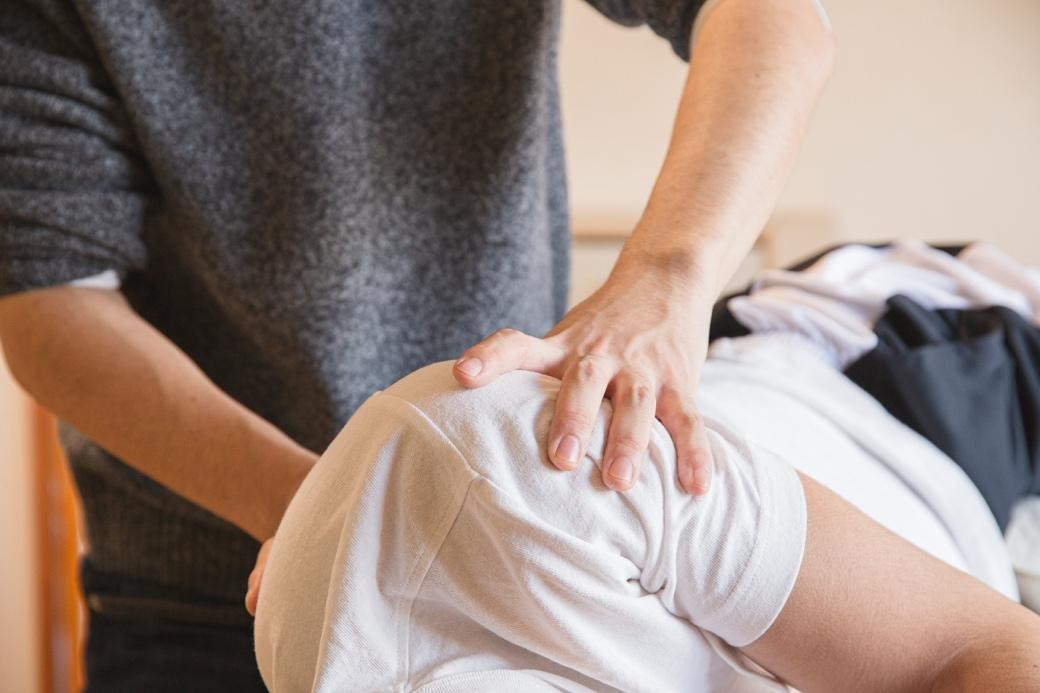Physiotherapy for Shoulder Dislocations
 The shoulder joint can dislocate, due to the design of the joint that allows for significant flexibility at the expense of stability. Shoulder dislocations are extremely painful and have an impact on activities of daily living and participation in sports. Optimal management of a shoulder dislocation helps to restore function of the shoulder joint, prevent complications, and prevent recurrent dislocations.
The shoulder joint can dislocate, due to the design of the joint that allows for significant flexibility at the expense of stability. Shoulder dislocations are extremely painful and have an impact on activities of daily living and participation in sports. Optimal management of a shoulder dislocation helps to restore function of the shoulder joint, prevent complications, and prevent recurrent dislocations.
What Are Shoulder Dislocations?
The shoulder is the most commonly dislocated joint in the body. Shoulder dislocations happen when the humerus pops out of the socket, which leads to a visible deformity, pain, swelling, muscle spasm, inability to move the shoulder joint, as well as numbness, weakness, or tingling in the neck or down the arm. Although most shoulder dislocations are forward (anterior), they can also occur backward (posterior) or downward (inferior) and can be partially (subluxed)) or completely dislocated.
Who Gets Shoulder Dislocations?
More than 70% of shoulder dislocations occur in men. Peak incidence of first-time shoulder dislocation in men occurs between the ages of 16 and 20 and in women between the ages of 61 and 70.
Causes of Shoulder Dislocation
It takes a strong force, such as a blow to the shoulder, to dislocate the joint. Examples of strong forces include extreme rotation of the shoulder, a direct hit to the shoulder in contact sports, and trauma from falls and motor vehicle accidents.
In younger patients, shoulder dislocations are usually caused by injury during sports participation, especially in contact and overhead sports such as football, rugby, and baseball. In older patients, shoulder dislocations are usually caused by suffering a fall. Shoulder dislocations can also occur more easily to those who have a hypermobile shoulder joint in which the head of the humerus can go beyond the natural capsular limitations. Other underlying shoulder pathology such as, a severe rotator cuff tear, can also create instability and failure to keep the humerus securely within the capsule of the shoulder.
Symptoms of Shoulder Dislocations
Symptoms of shoulder dislocations include:
- A popping sensation
- Sudden onset of pain in the shoulder
- Decreased range of motion of the shoulder
- Numbness or tingling in the neck or arm
- Muscle spasm in the shoulder area
- Swelling or bruising in the shoulder area
- Anterior dislocations – noticeable joint deformity with the arm abducted and externally rotated
- Posterior dislocations – the arm is adducted and internally rotated with the patient guarding the arm
Treatment of Shoulder Dislocations
Treatment of shoulder dislocations may include conservative or surgical options, depending on the severity of the dislocation, patient age and physical activity level, and personal preferences.
Reduction of the dislocation involves moving the head of the humerus back into the socket, using different techniques such as scapular manipulation, external rotation, Cunningham technique, Milch technique, Stimson technique, traction counter-traction, Spaso technique, Fares technique, Fulcrum technique, Kocher’s and Hippocratic technique, and posterior reduction. Reduction of the shoulder is followed by immobilization of the shoulder joint and referral for conservative or surgical management.
Conservative management has a 60% recurrence rate of dislocation, while surgery has a 16% recurrence rate. However, surgery carries risks of complications, including shoulder stiffness, non-union fracture of the graft, temporary nerve injury, and hematoma. Therefore, the benefits and risks of conservative management and surgery need to be thoroughly weighed with each patient.
In younger patients, especially those who play contact sports, the risk of recurrence is higher and surgical management may be preferred to reduce the risk of recurrence. Patients older than 40 are less likely to suffer a recurrence, and conservative management may be preferred.
The Role of Physiotherapy in Shoulder Dislocations
Physiotherapy is beneficial for both conservative management of a shoulder dislocation and for post-surgical rehabilitation after surgery. Physiotherapy helps to restore normal functioning of the shoulder joint and prevent reinjury by improving strength, stability, and range of motion of the shoulder joint.
References
- Hasebroock AW, Brinkman J, Foster L, et al. Management of primary anterior shoulder dislocations: A narrative review. Sports Med Open. 2019;5(1):31. doi:10.1186/s40798-019-0203-2
- Verweij LP, Baden DN, van der Zande JM, van den Bekerom MP. Assessment and management of shoulder dislocation. BMJ. 2020;371:m4485. doi:10.1136/bmj.m4485
- Abrams R, Akbarnia H. Shoulder dislocations overview. StatPearls. Updated August 8, 2023. Accessed December 7, 2023. https://www.ncbi.nlm.nih.gov/books/NBK459125/
- Schliemann B, Minkus M, Seybold D, et al. Conservative management of first-time traumatic anterior shoulder dislocation. Obere Extremität. 2021;16(1):2-7. doi:10.1007/s11678-021-00626-z